After your arrival at the international airport, you will proceed to Windhoek, the capital city of Namibia. You will find your accommodation in a quiet neighborhood close to the city centre with its afro / european flair and a peaceful atmosphere. In the evening you will enjoy the typical Namibia cuisine in one of the several restaurants in the city

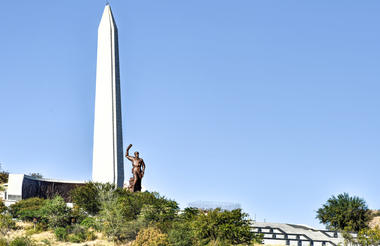
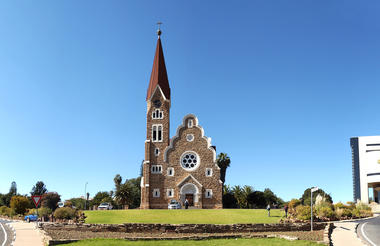
Leaving Windhoek, you will travel into the largest sand mass on Earth, the Kalahari Desert. The Bushman refer to it as the “Soul of the World”, an emotive description for this area! With its deep red sand dunes and endless grass plains interspersed together with acacia’s and shrubs, it is the only form of survival for a vast amount of specially adapted wildlife. You will enjoy the opportunity to experience the fauna and flora that has survived this desert environment.



After breakfast you will drive by plains of straw-yellow grass and red dunes, and visit the picturesque Quiver Tree Forest, located about nine miles (14 km) north of the town of Keetmanshoop. With forked branches and a stout trunk, the quiver tree grows about 30 feet (9 meters) tall. Also called ‘kokerboom’, the quiver tree is an aloe plant, whose pliable bark was used by tribesmen to make arrow quivers. You will stop for lunch in Keetmanshoop and head south for about an hour to enjoy a brief stop at the lovely Naute Dam, a gathering spot for many water birds, then you will continue to Fish River Canyon. The Fish River Canyon is the second largest canyon in the world. It is set in a harsh stony plain dotted with drought resistant succulents and inhabited by a diversity of desert-adapted animals such as the Hartmann’s mountain zebra, springbok and oryx. Its dimensions are enormous: 160 km long, up to 27 km wide and 500 m deep. Just as impressive is the period of time during which it was formed: 350 million years ago a fault with a width of 20 km appeared and the river meandered through it in wide loops. When the ancient continent of Gondwana disintegrated 120 million years ago, the Fish River started to dig deep into the ground and create its system of gorges.



If you go for the 6 km Morning Hike you will experience the very core of Gondwana Canon Park. You will be accompanied by a guide who will gladly share his knowledge about the fascinating desert landscape around the canyon (about 3 hours). There is no better way to end your excursion than with the Sundowner Walks. Watch the sun going down with a drink to end off the lovely day.



Today your journey will take you to Luderitz. Luderitz is perched on a gaunt eminence of rock on the Atlantic’s mesmerizing southern peninsula. Devoid of natural vegetation, but bejewelled with late 19th century architecture, Luderitz is not only famous for being the landing spot of the first German settlers in 1883; it is here where the country’s rather poor existence was boosted into glamour, power and success with the discovery of the first diamonds in 1908 at “Kolmanskuppe”. A wide variety of activities and natural heritage sites are found in and around the town, many of which are unknown, or have hardly been experienced by the discerning and adventure seeking guest. You will then take a Bogenfels and Pomona Tour. This a simple trip into the Sperrgebiet (forbidden diamond area) with visits to the abandonded mining town of Pomona & the rock arch at Bogenfels.
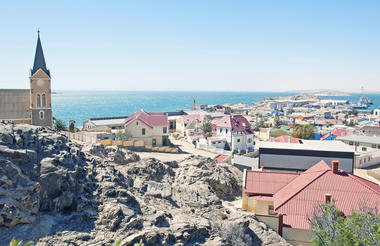
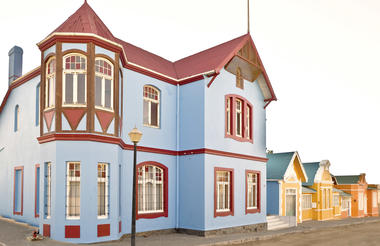
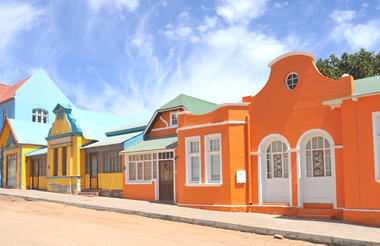
Today you will visit the Kolmanskop Ghost Town. Once a cosmopolitan centre of immeasurable wealth (brought about by the discovery of huge diamond fields in 1908), Kolmanskop stands 5km outside Luderitz as a haunting monument exposed to the relentless forces of the Namib Desert. The once opulent buildings surrendered slowly to the encroaching desert sands, yet offering an eerie experience when visiting the town on a guided tour. To finish off your day in Luderitz take part in several cruises around the Luderitz harbour, options include sunset cruises & a visit to an oyster farm.
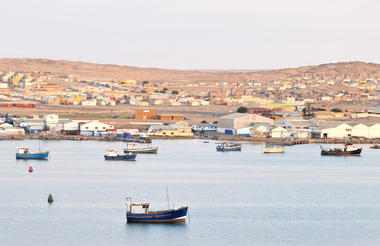
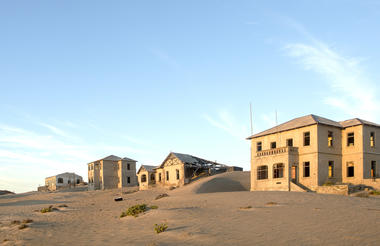
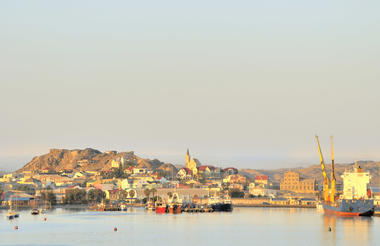
After breakfast you will travel north through the pre-Namib to the Namib Desert. This is the gateway to Sesriem Canyon and Sossusvlei, where some of the highest sand dunes on Earth stand towering over the white desert plains. The afternoon can be spent relaxing at the pool.
Namib Desert is often referred to as the world's oldest desert. Namibia gets its name from the Namib so it should come as no surprise to discover that the entire western section of the country is part of the Namib. Of course the Namib spreads beyond the borders of Namibia and sprawls into southern Angola and the northern Cape Province of South Africa. A section of the central Namib Desert incorporates The Namib Naukluft Park, one of the largest national parks in Africa, as well as the Naukluft Mountains. The park is a combination of the Namib Desert Park and the Naukluft Mountain Zebra Park as well as sections of the Diamond Area. The whole area is just less than 50,000km2 and main attractions are Sossusvlei, Sandwich Harbour and the Naukluft hiking and four wheel drive trails. Sossusvlei is the one attraction that should not be missed while you are in Namibia; the dunes are amazing and even though this is a popular tourist destination it is still easy to gain a sense of solitude while climbing one of the dunes or walking to the deadvlei.
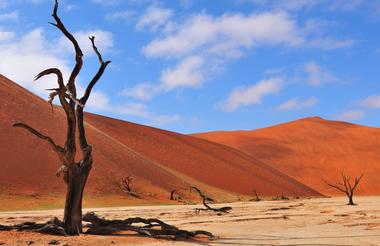
Today you will go on a guided Sossusvlei excursion. At dawn you will enjoy a sunrise excursion to the highest dunes in the world. The variety of colours and shapes are fantastic.
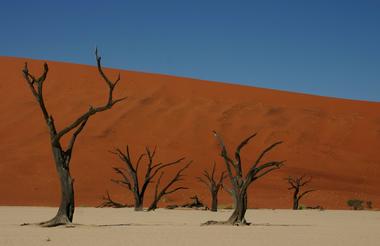
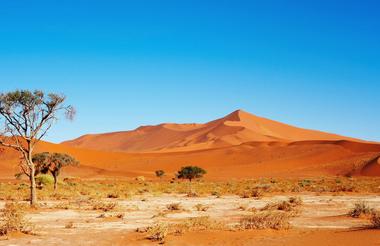
You will have an early departure via Solitaire and the Ghaub and Kuiseb passes to reach Swakopmund, Namibia’s premier holiday resort, that is characterised by a wealth of well-preserved German colonial buildings. Streets names serve as reminders of formers colonial rulers and administrators, while German is still widely spoken. Well-known historic buildings include Woermann House, the old State Railway Station, Alte Kaserne (Old Fort) and the old Magistrate’s Court which now serves as State House in Swakopmund. You have will the rest of the day to yourself to relaxe.

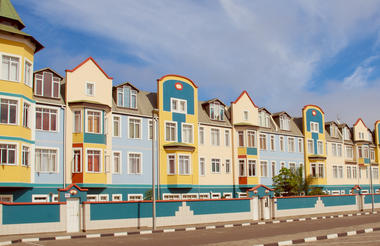
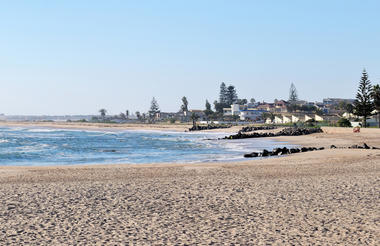
Spend your day at leisure in Swakopmund and enjoy the relaxed atmosphere of this coastal town, nestling between the desert and the Atlantic ocean. The promenades, palm trees and beautiful gardens remind of an European seaside resort. Magnificent buildings dating back to the turn of the century give the city its charm. Excursions like boat cruises from Walvis Bay, quad-biking in the nearby dunes or scenic flights can be booked in town. The Marine Aquarium, the interesting Swakopmund Museum, the open wood market and the Kristal Galerie are worth a visit. The Kristal Galerie houses the largest known crystal cluster in the world.
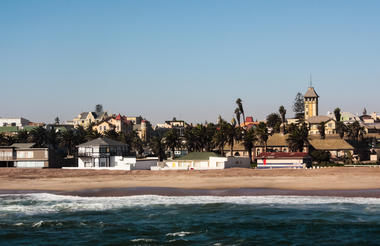
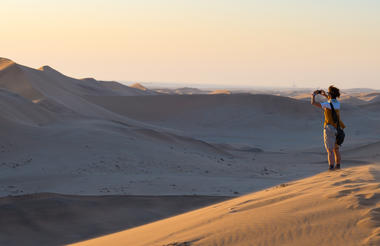
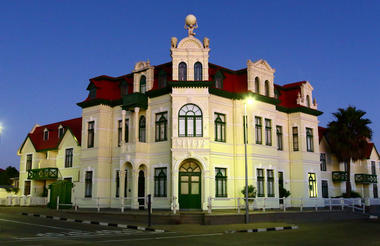
Today you will reach the famous Damaraland. Damaraland is one of the most scenic areas in Namibia, a huge, untamed, ruggedly beautiful region that offers a more adventurous challenge. Here there are prehistoric water courses with open plains and grasslands, massive granite koppies and deep gorges. Towards the west, the geography changes dramatically with endless sandy lands, that incredibly are able to sustain small, but wide-ranging, populations of desert-adapted elephant, black rhino, giraffe, ostrich and springbok. These animals have adapted their lifestyles to survive the harshness of the sun- blistered, almost waterless desert spaces. Elephants can travel up to 70km in a day in search of food and water and unusually, do not destroy trees in their quest for food. Together, Damaraland and Kaokoland are known as the Kaokoveld. You will spend the rest of the day to relax and explore Damaraland.
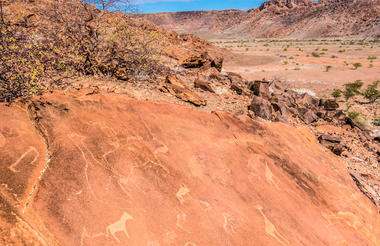
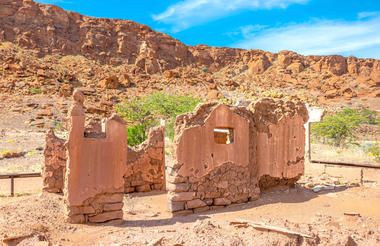
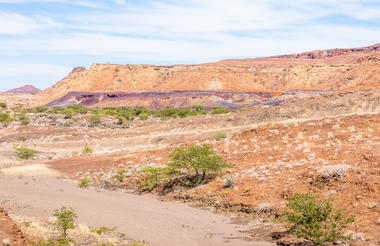
You will spend between 4-6 hrs on a morning drive exploring the region in search of the elusive desert-adapted elephants. Usually they travel up to 60kms over inhospitable terrain between feeding areas and known waterholes. In times of drought they will dig holes in dry river beds until water seeps up. This also supplies other desert dwelling creatures. To complete your day in Damaraland you will enjoy a 2hr safari to visit some of Damaraland's most famous attractions including the Burnt Mountain, the Organ Pipes and the highlight of your trip over 2,500 rock engravings at Twyfelfontein, a World Heritage Site.
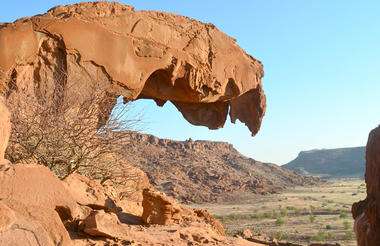
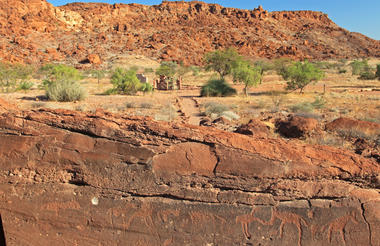
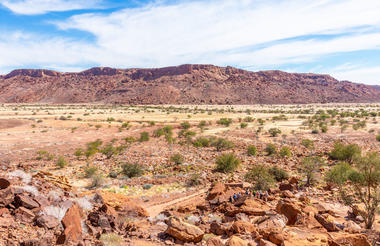
Your journey today will enable you to reach the famous Etosha National Park, one of Africa’s great game parks. Centred around the vast expanse of the Etosha Pan, the park is a sanctuary to the largest population of the western subspecies of the black rhino, white rhino, large herds of elephants, the striking black-faced impala, lions and a profusion of other animals and birds. Upon arrival, preferably, go for late afternoon game drives.
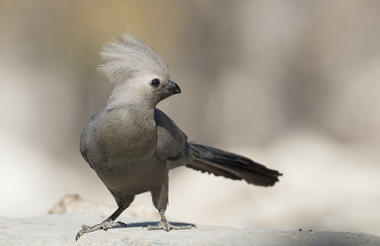
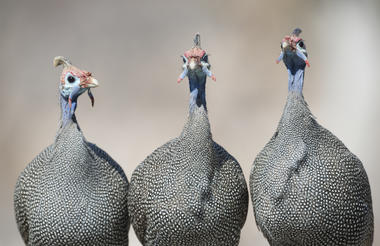
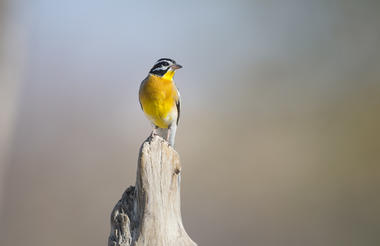
A whole day of game viewing in the Etosha National Park will lie ahead of you, driving along the vast saltpan with stops at various waterholes and game viewing en route.
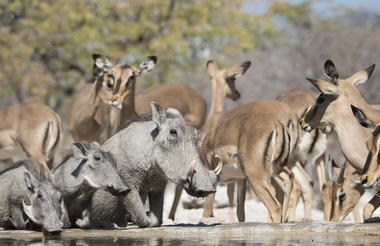
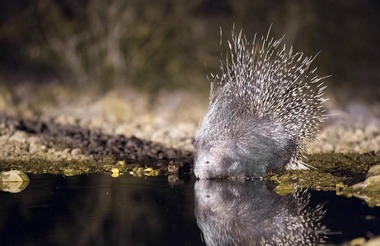

Today your journey will take you to Onguma Fort situated in the Onguma Game Reserve. This Namibia safari lodge is within a 34 000 hectares of diverse landscapes bordering Etosha National Park. Guided morning walks, morning game drives, sunset drives and rhino researching drives are the most popular activities at Onguma Game Reserves.



After a hearty breakfast you will continue via Tsumeb and Otjiwarongo to reach Okonjima Lodge which is situated halfway between Windhoek and Etosha National Park. The lodge is home to The AfriCat Foundation, a non-profit organization, committed to the long-term conservation of Namibia's large carnivores, notably cheetahs and leopards. You will see the Bushman Trail, which offers an opportunity to experience a day in the life of a Bushman. Along an easy walking trail, highlighted with information on the way, the art of making traditional artefact's can be learned, as well as how the San adapted and survived in such an unforgiving, wilderness environment. There are other guided and self-guided walking trails, some up to 8kms in length available, for those who prefer to enjoy their time in the solitude of the wild. Cheetahs and leopards can be seen from a game-viewing vehicle.
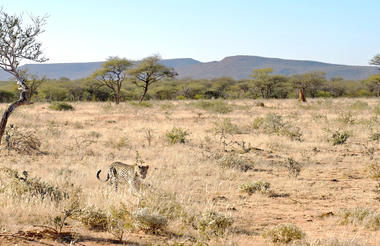
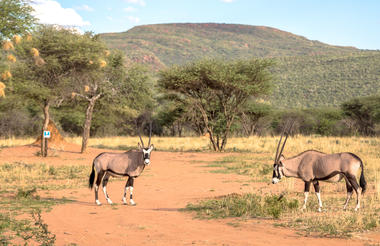
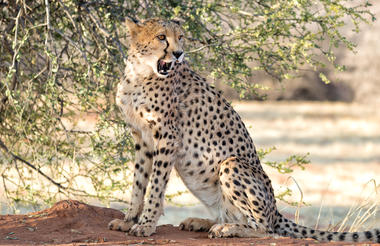
Transfer to the airport on time for your flight.




